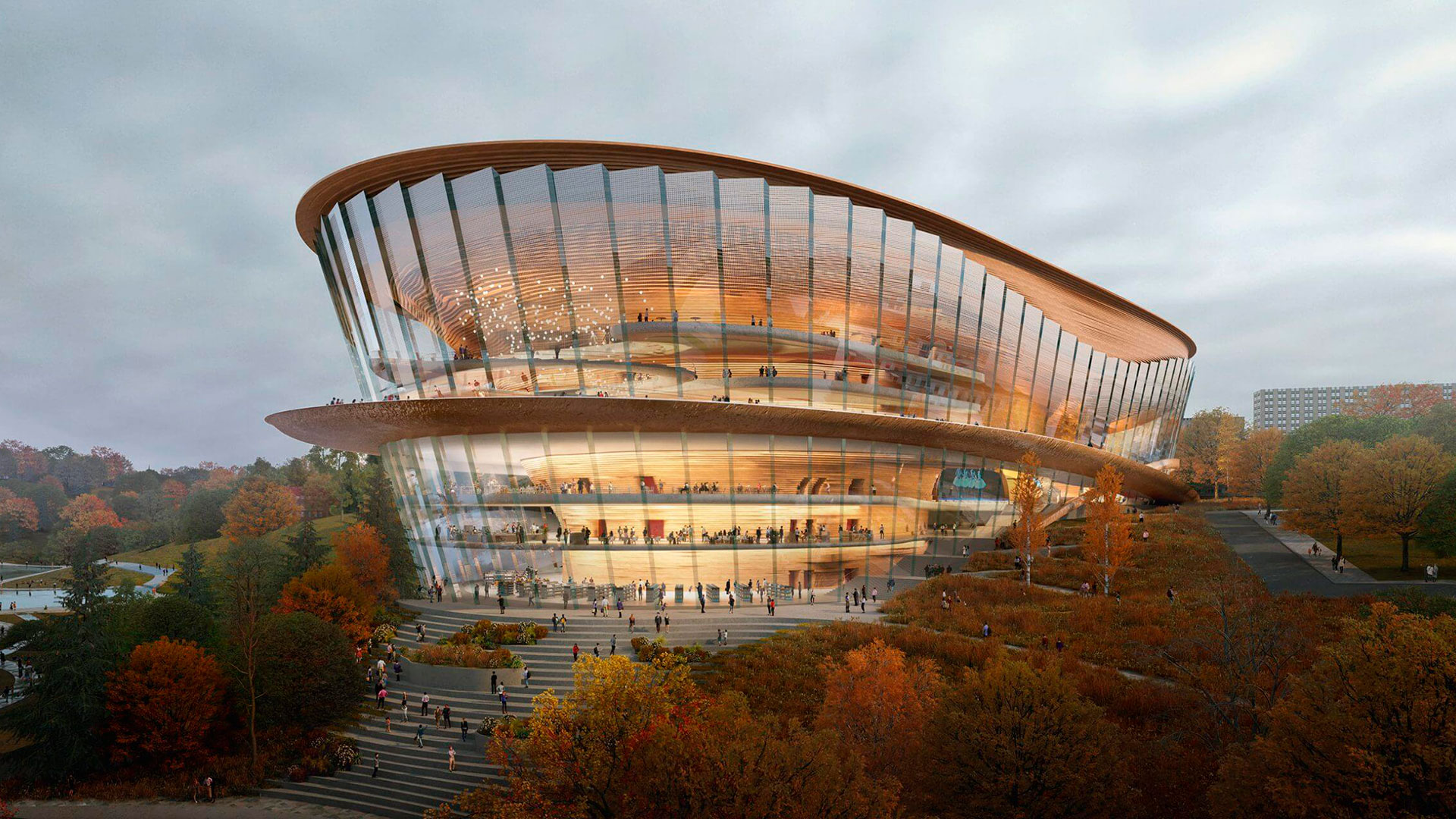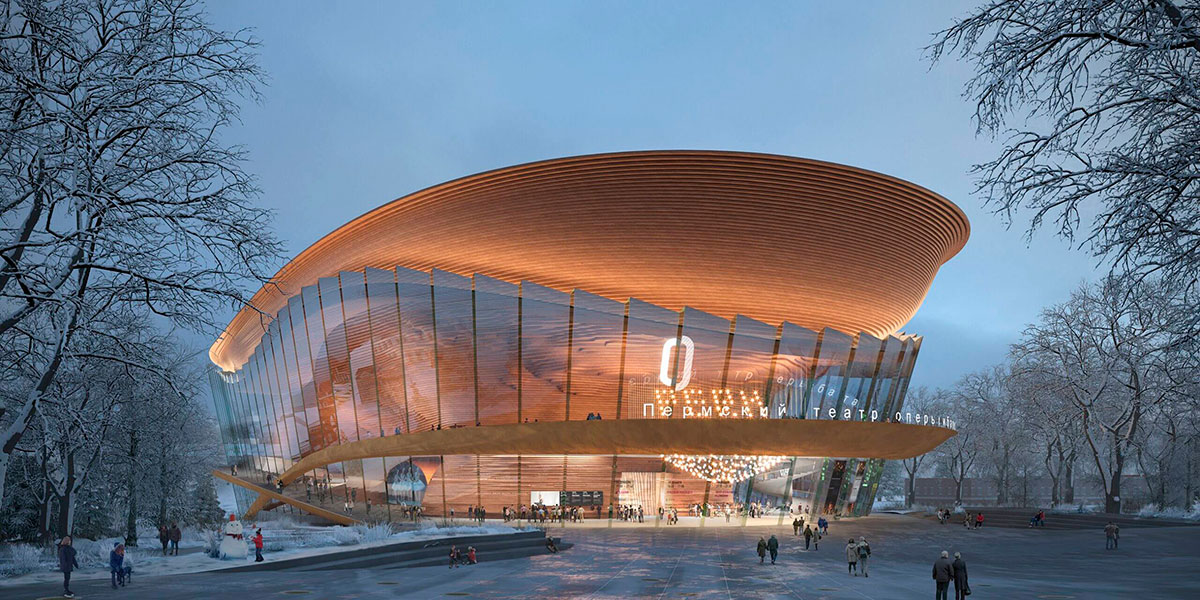“When we embarked on the project, we set out to investigate the factors that contribute to Perm’s unique place in Russian history,” say the architects of Workshop HY Architecture & Design (WHY), the New York and Los Angeles-based firm selected to design the Tchaikovsky Academic Opera and Ballet Theatre. The project is part of the local authorities’ plans to revitalise Perm’s cultural and social life. In the authors’ interpretation, the conceptual design of the building represents “a celebration of culture and industry, people and history, which will lead the city into a new era of cultural and economic development“. It is precisely this historical and social substratum that has inspired them.
Indeed, with almost 3 million inhabitants, Perm is situated in a mountainous region on the western slopes of the Ural Mountains, to which the city has been linked throughout its history. The varied relief of its geographical area is rich in minerals, including oil and gas, gold, coal, copper, salt… WHY architects have taken this “dramatic geology” as their starting point and engendered their design as a rock rising above the valley of the Kama River, beside which the city sits. The textures and materials chosen refer to this rugged geology and its mining legacy. In keeping with this approach, the building is supported by a central textured form, a kind of rock formed by the juxtaposition of layers of wood in variable and formless patterns.
At the same time, its design has a “highly porous” appearance. Instead of creating a “closed bastion of high culture”, the architects have chosen to wrap that central rock form the “core”, in glass curtains for maximum transparency and openness. In this way, they have created a building from which to contemplate the city and the surrounding mountains from all angles, a dynamic, fluid space that places art and nature at the centre of urban life. In fact, whilst reproducing the curves present in the regional geology, the circulations inside the palace reflect the movements of the dance and music that will be performed there. All these formal elements extend to the surrounding park, whose landscaping offers continuity between the built and natural environment.
To get an exact idea of the project, why not take a look at the WHY video:
Sources: WHY, Dezeen, Designboom.










